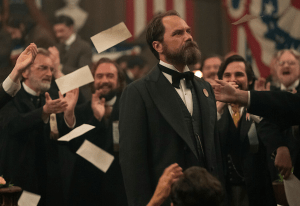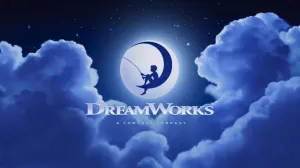Bleach’s live-action adaptation is one of the best anime-to-film interpretations released in the last few years, perhaps ever. If future live-action adaptations strongly represent their series while delivering a standalone story like this, fans won’t have anything to worry about.
Videos by ComicBook.com
Live-action anime adaptations usually don’t get positive responses from fans because of necessary limits cutting out important story beats in order to adapt as much as possible. But Bleach dances around this problem with grace.
There is a successful way to adapt anime and manga, and Bleach‘s solution to this problem will help everything other adaptation going forward as well.
As with adapting all fiction to another medium, sacrifices or changes are made that does more often result in an adaptation losing the spirit of the original. Fans often point to Death Note (2017), Fullmetal Alchemist (2017), and Dragon Ball Evolution (2009), as examples of this.
In Shinsuke Sato’s Bleach, the film loosely adapts the Substitute Shinigami arc of Tite Kubo’s original series. The term “loosely” might scare you a bit here, but don’t worry. In this film, the necessary story beats of the arc are all represented in some fashion. Characters you’d expect to be here are here, and there are no significant changes to the character’s personality or origins.
Yet, the big change is how loosely its willing to adapt the original in order to successfully make creative changes to make the series work better as a film. It never feels tied down by some sort of unwillingness to change too much. For example, the Grand Fisher hollow is treated like a much bigger deal in the film than the original series.
In Tite Kubo’s manga, the Grand Fisher is directly tied to a moment in Ichigo’s past and he overcomes it quite easily. It’s sort of like an entry-level boss to the much stronger Menos Grande introduced at the end of the Substitute Shinigami arc. But in the film, Grand Fisher is given a much more appropriate role as a villain for Ichigo.
Director Sato took the core of the Grand Fisher hollow story, and treated it with a proper amount of emotional depth overcoming such a foe deserves. In fact in this area, it’s even more successful than the original as the emotional weight of such a foe reverberates through the rest of the film’s story. It gives the film a strong narrative foundation to build upon.
In this one change, the film ends up feeling like its own standalone project and it’s easier to stop directly comparing to the original series. When you stop comparing an adaptation to the original series, that’s when you know it’s successful. Adaptations aren’t meant to just be re-tellings of stories, but instead discover what hooked fans to the original in the first place.
Director Sato has had experience adapting anime and manga into film, with admittedly mixed results. His take on Hiroya Oku’s Gantz and Hiro Arikawa and Sukumo Adabana’s Library Wars fare better than his attempt at sequels for the two. His experience shines here as well as his deft hand leaves the best of Bleach, while removing some of its weaker elements.
Though it’s not perfect in what it chooses to adapt or characters brought to the film, Sato makes sure that everything here feels like his Bleach. Characters are translated to the screen fantastically, with every actor involved (Sota Fukushi’s Ichigo and Hana Sugisaki’s Rukia, especially) putting out great performances because there is a strong well to draw from.
Even Bleach‘s more ridiculous elements such as the Zanpakuto and Hollow fare better in the film, because Ichigo’s struggle just feels more “real.” But there’s also a proper element of fun that the series had too, even when it was at its darkest or most intense. It’s represented well here too as the swordplay is much better than it ever was in the series thanks to Sato’s emphasis of the physical weight and space of Ichigo’s massive blade.
Does Bleach‘s live-action film help or hurt live-action anime adaptations? It absolutely helps because it shows that these adaptations can work as long as the director and team handling the film have a deep understanding of the underlying elements of the series.
Fans don’t necessarily respond to a manga or anime series because of any one element, but rather how those elements coming together makes them feel. If an adaptation can understand why the original narrative resonates with fans, then it can still reproduce those feelings even with a newer take on that story. But if not, it’s gonna hurt.
For those unfamiliar with Tite Kubo‘s Bleach, the series follows the young delinquent Ichigo Kurosaki, who had the ability to see spirits. He soon obtains the power of a Soul Reaper – one meant to usher lost souls to the afterlife – and now has the duty to defend the living world from monstrous dark spirits known as Hollows.
The original manga was serialized in Shueisha’s Weekly Shonen Jump from 2001 to 2016, and was collected into 74 volumes. It has been adapted into English thanks to VIZ Media, and has sold over 900 million copies in Japan. The series was adapted into an anime by Studio Pierrot from 2004 to 2012, and has four feature-length animations, rock musicals, video games, and a ton of other merchandise. The English language broadcast premiered on Cartoon Network’s Adult Swim block in 2006, and you currently find the Japanese and English language versions now streaming on Hulu.
The movie adapts the first arc of the series, the “Substitute Shinigami” arc. Early reactions to the film have been positive overall, and cast of the film includes Sota Fukushi as Ichigo Kurosaki and Hana Sugisaki as Rukia Kuchiki, MIYAVI as Byakuya Kuchiki, Ryou Yoshizawa, as Uryuu Ishida, Taichi Saotome as Renji Abarai, Erina Mano as Orihime Inoue, Tomo Koyanagi as Chad Yasutora, Yosuke Egochi as Isshin Kurosaki, Masami Nagasawa as Masaki Kurosaki, and Seiichi Tanabe as Keisuke Urahara.








